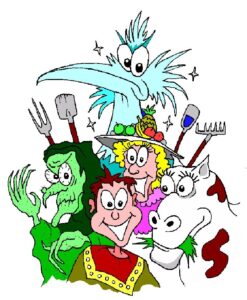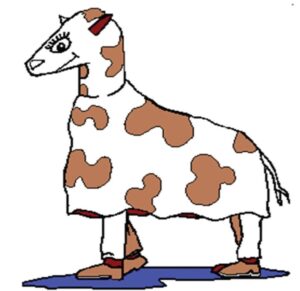
One of the most famous and popular pantomimes is Jack and the Beanstalk, a tale rich with adventure, moral lessons, and humour. The question is how did it become a pantomime?
Basically, to learn its journey from folklore to modern pantomime, we need to explore the origins of the story itself, the growth of pantomime as a performance art, and the way these two came together over time to create the version of the tale we know today.
The Folklore of “Jack and the Beanstalk”
At its core, Jack and the Beanstalk is a fairy tale around the usual theme of bravery, adventure, and triumph over evil. It’s all about a poor boy, Jack, who trades his family’s last cow for magic beans. These beans grow into a massive beanstalk that stretches into the clouds, leading Jack to a giant’s castle where he encounters a world of danger, wealth, and magic. Ultimately, Jack defeats the giant, seizes his treasures, and returns home a hero. Simple isn’t it!
We don’t really know the origins of the story, as with so many of these it has its roots in the variety European folklore. It seems that this is a tale that became popular when Joseph Jacobs, a British writer, included it in his 1890 collection English Fairy Tales. However, and this is the interesting bit, you see Jacobs’ version was not the first time that the story had appeared. There were earlier versions of the same story that appeared as far back as the early 18th century, in fact, it appears it was an old wives tale that seems to have been around for years.
Furthermore, would you believe that scholars have traced the basic tale as far back as ancient Indo-European mythology. In those days, the giant in the story, who lives above the clouds, was thought to represent an echo of earlier sky gods or supernatural beings. An interesting thought!
Similarly, the beanstalk itself was seen by some in those ancient days as a symbol of the “axis mundi”. I know you ask, what is the axis mundi? Well, it appears that the “axis mundi” symbolized the connection between the spiritual and physical worlds, it was often shown as sacred architecture or geographical features, like mountains, trees, or temples. Basically, it was a recurring theme in many legends that signify a connection between the earthly and the divine.
How “Jack and the Beanstalk” Became a Pantomime
I believe it was because Jack and the Beanstalk fits the pantomime format perfectly. The story contains all the basics of the pantomime traditions: a young, brave hero (Jack), a bumbling villain (the giant), magic (the beanstalk and the beans), and the opportunity for humour and adventure. It was therefore a natural story that could be adapted as a pantomime, and by the early 19th century, it was regularly performed in pantomime season.
One of the earliest pantomime adaptations of Jack and the Beanstalk was in the early 1800s, it appears that the first production took place in London’s Theatre Royal Drury Lane in 1819. From this date it became an establish title in the British pantomime season, as it had everything needed with a combination of fairy tale fantasy, slapstick comedy, and audience interaction.
Over time, Jack and the Beanstalk developed its format, as certain elements became standardized, while others were changed to suit the tastes of the time. For example, as in all traditional pantomime, Jack’s mother, often referred to as “Dame Trott,” became portrayed as a larger-than-life, comical figure, typically played by a man in drag. The giant, too, is usually depicted humorously, sometimes by an actor on stilts or by using puppetry to exaggerate his size.
 A feature of many Jack and the Beanstalk pantomimes has been the addition of new characters and subplots that give the story more opportunities for comedy and spectacle. An example is that now Jack has a love interest, often a princess or noblewoman, whose hand he must win in addition to defeating the giant. Then, of course, there is the cow! Typically named “Daisy,” who has become a beloved character in its own right, which is usually performed by two actors in a cow costume, providing so many opportunities for slapstick humour.
A feature of many Jack and the Beanstalk pantomimes has been the addition of new characters and subplots that give the story more opportunities for comedy and spectacle. An example is that now Jack has a love interest, often a princess or noblewoman, whose hand he must win in addition to defeating the giant. Then, of course, there is the cow! Typically named “Daisy,” who has become a beloved character in its own right, which is usually performed by two actors in a cow costume, providing so many opportunities for slapstick humour.
The magic of beanstalk again gives an opportunity for exciting stage effects and creative staging. In most of the productions it is a dramatic moment as the beanstalk “grows” on stage, usually due to clever stagecraft and lighting effects. This, along humour, music, and audience participation, have made Jack and the Beanstalk one of the most popular and enduring pantomimes in British theatre.
The Evolution of “Jack and the Beanstalk” in Pantomime
Over the years, as has happened to most pantomimes, different productions of Jack and the Beanstalk have put their own spin on the story, often incorporating topical references and modern sensibilities.
One of the hallmarks of British pantomime is its ability to adapt to the times, and Jack and the Beanstalk is no exception. Today, it’s not uncommon to see jokes and references to current events, celebrities, and popular culture, making each pantomime performance feel fresh and relevant to contemporary audiences.
Despite these modern updates, the basic elements of the story and its pantomime form have stayed remarkably consistent. The central themes of Jack’s bravery, his battle with the giant, and his eventual triumph are still at the heart of the production, as are the comedic characters and slapstick humour that audiences have come to expect.
Conclusion
Jack and the Beanstalk has become one of the most famous and loved pantomimes for British audiences, as they captivate audiences with a mix of adventure, humour, and spectacle. The story’s evolution from a folk tale to a pantomime staple reflects the adaptability and enduring appeal of both the fairy tale and the pantomime tradition itself.
Isn’t Panto fun?
Here are ten questions to explore the journey of Jack and the Beanstalk from folklore to pantomime:
- What are the central themes of the original Jack and the Beanstalk story?
- How did Joseph Jacobs’ 1890 version popularize Jack and the Beanstalk?
- What ancient mythological elements are thought to have influenced the Jack and the Beanstalk story?
- What is the significance of the “axis mundi” in relation to the beanstalk?
- Why was Jack and the Beanstalk a good fit for the pantomime format?
- When and where was one of the earliest pantomime performances of Jack and the Beanstalk?
- How has the portrayal of Dame Trott evolved in pantomime productions of the story?
- What role does the character of Daisy the Cow play in modern pantomimes of Jack and the Beanstalk?
- How do contemporary Jack and the Beanstalk pantomimes incorporate modern humour and references?
- What key elements of the original fairy tale have remained consistent in its pantomime adaptations?
Other places you could find more about Jack and the Beanstalk:
https://www.pookpress.co.uk/jack-and-the-beanstalk-english-tale/
https://hockliffe.dmu.ac.uk/items/0019.html
https://news.sky.com/story/jack-and-the-beanstalk-could-be-5-000-years-old-10144095

